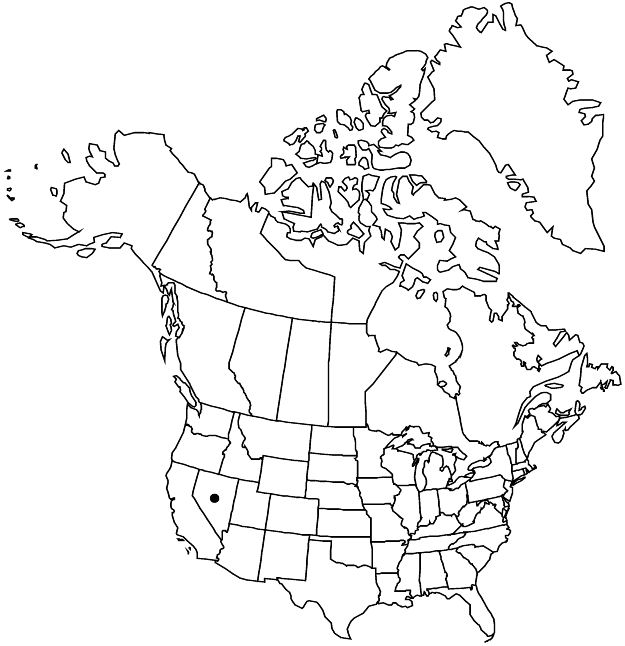Mentzelia leucophylla
Bot. Gaz. 27: 448. 1899.
Plants biennial or perennial, bushlike, perennials with subterranean caudices. Stems multiple, erect, straight; branches distal or along entire stem, distal longest or all ± equal, antrorse, straight; hairy. Leaves: blade 15–61 × 8–28.5 mm, widest intersinus distance 6–23.8 mm; proximal obovate, ovate, or broadly elliptic, margins usually dentate to serrate, rarely entire, teeth (0–)6–20, slightly antrorse or perpendicular to leaf axis, 0.4–4 mm; distal deltate to cordate, base clasping, margins usually dentate, rarely entire, teeth (0–)6–12, perpendicular to leaf axis, 0.5–2 mm; abaxial surface with complex grappling-hook and needlelike trichomes, adaxial surface with needlelike trichomes, both surfaces whitish, densely hairy. Bracts: margins entire. Flowers: petals golden yellow, 9.2–13.2 × 2.8–5 mm, apex rounded, glabrous abaxially; stamens golden yellow, 5 outermost petaloid, filaments narrowly spatulate, slightly clawed, 6–10.6 × 1.3–2.6 mm, with anthers, second whorl with anthers; anthers twisted or straight after dehiscence, epidermis smooth; styles 6–8.1 mm. Capsules cup-shaped, 5–9.5 × 6–8.6 mm, base rounded, not longitudinally ridged. Seeds: coat anticlinal cell walls straight, papillae 11–13 per cell. 2n = 36.
Phenology: Flowering Apr–Sep.
Habitat: Barren washes, rock ledges, gypsum with alkaline outcrops.
Elevation: 600–700 m.
Discussion
Mentzelia leucophylla is known only from the Ash Meadows of Nye County (N. H. Holmgren et al. 2005). It is morphologically similar to M. oreophila, which occurs in Nye County and elsewhere, but the two taxa are not known to co-occur. Trichome density, despite being difficult to quantify, provides perhaps the easiest method to differentiate the two taxa, with the densely hairy leaves of M. leucophylla appearing whitish. In addition to characters provided in the key, M. leucophylla, which is up to seven decimeters tall, is often more robust than M. oreophila, which is no more than six decimeters tall.
Selected References
None.
